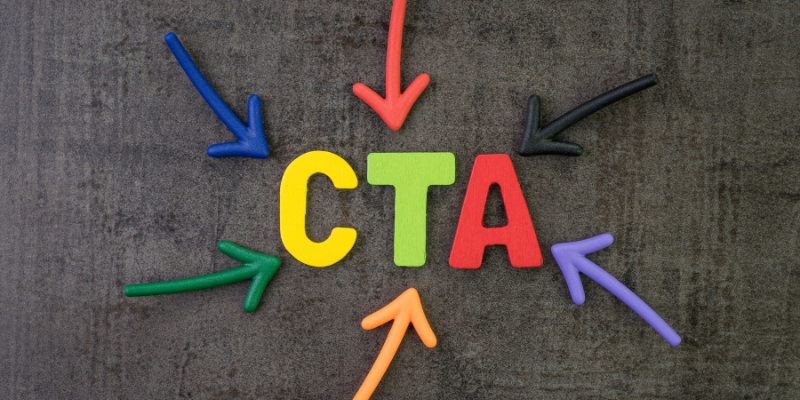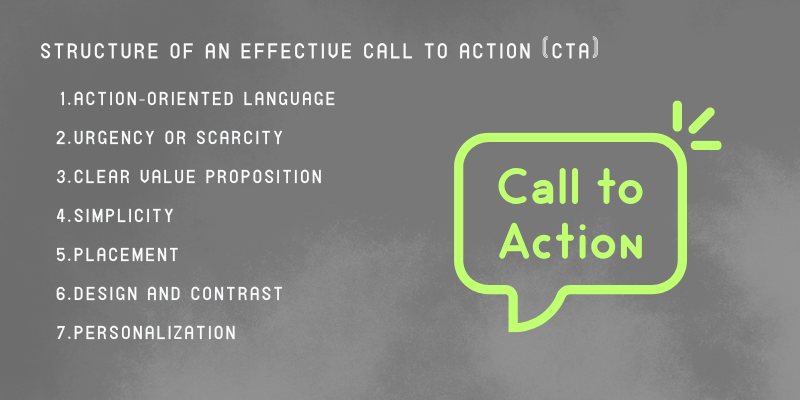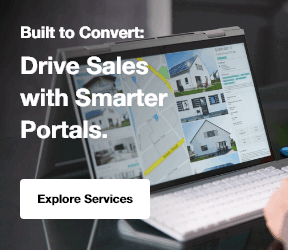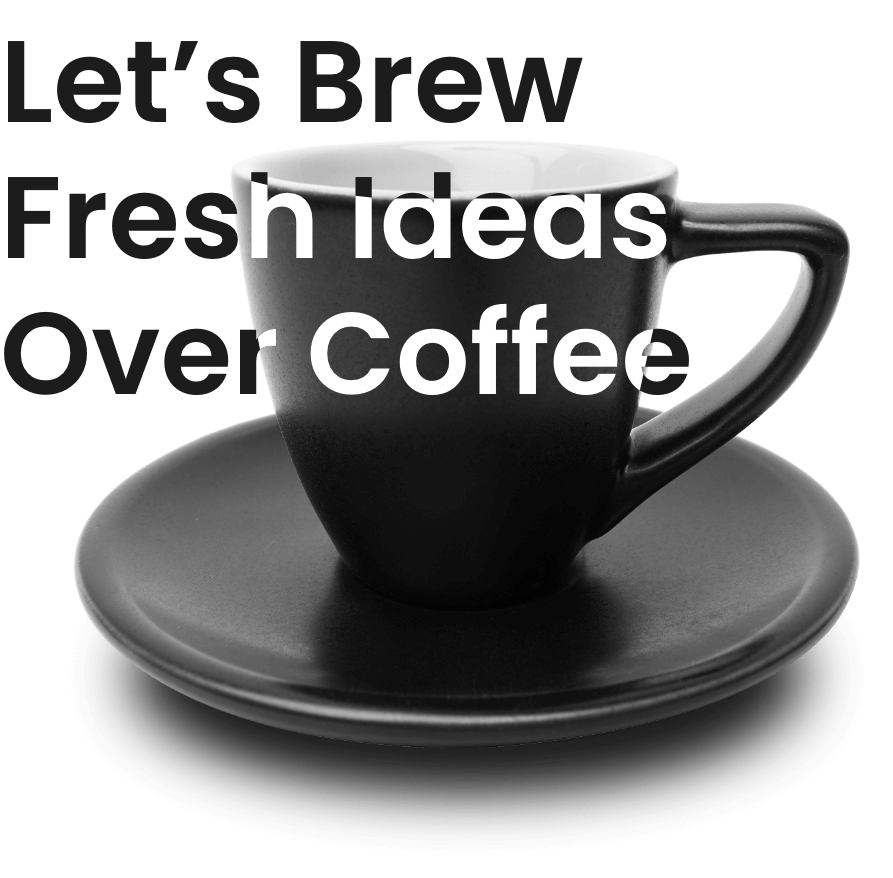A Call to Action (CTA) is a marketing term used to refer to any prompt or directive designed to encourage the audience to take immediate action.
If you're wondering what is CTA in marketing, it typically appears as a button, text, or image that motivates the user to perform a specific task such as making a purchase, signing up for a newsletter, downloading a resource, or clicking to learn more.
In digital marketing, a CTA typically appears as a button, text, or image that motivates the user to perform a specific task such as making a purchase, signing up for a newsletter, downloading a resource, or clicking to learn more.
Whether it's a simple phrase like “Buy Now” or a more detailed request like “Get Your Free Trial,” a CTA is intended to direct the user toward the next step in their customer journey.
Without a clear CTA, users might not know how to proceed or what action they should take next, resulting in missed opportunities. CTAs help bridge the gap between content consumption and customer action by providing clear, actionable instructions.
They are essential for guiding users through the sales funnel and helping brands capture leads, drive sales, and increase user interaction.
In addition to conversions, CTAs are instrumental in boosting user engagement. Well-placed and well-designed CTAs encourage users to explore more content, interact with the brand, and build a relationship.
What is a Call to Action (CTA)?

A Call to Action (CTA) is a marketing prompt designed to encourage a user to take a specific action that benefits the business or organization.
It’s a direct invitation for the audience to act on an offer, such as clicking a button, filling out a form, or making a purchase.
A CTA can take various forms, such as a button, link, or even an image, and is typically strategically placed on websites, in emails, social media posts, and advertisements.
Without a CTA, users may enjoy your content or engage with your site, but they may not take the next step that moves them further into your sales funnel.
For example:
- E-commerce sites might use “Add to Cart” or “Buy Now” to get users to make a purchase.
- Service-based businesses may use “Request a Free Quote” or “Schedule a Demo” to drive service inquiries.
- Content-focused websites might use “Download Your Free E-Book” or “Subscribe Now” to grow their email list or engage users further.
A well-placed CTA, such as in an article comparing Shopify vs WordPress, clearly guides the user toward what they should do next, eliminating confusion and enhancing the likelihood of conversion. These examples clearly guide the user toward what they should do next, eliminating confusion and enhancing the likelihood of conversion.
Purpose and Goal of a CTA
The purpose of a CTA is to drive a user to take a direct action that moves them through the conversion funnel. CTAs are used to:
- Guide the User: A CTA helps users understand what action they need to take next. It provides clear instructions on how to proceed, which removes any uncertainty or confusion. For instance, in high ticket affiliate marketing, a CTA might prompt users to click through to an exclusive product or service.
- Drive Conversions: The ultimate goal of a CTA is to convert a visitor or lead into a customer, whether through a sale, lead generation, or another desired action.
- Increase Engagement: A CTA is not only about conversions. It also promotes engagement by encouraging the user to interact with more content or share it with others. For example, on product pages, a CTA like "Learn More" could be linked to more detailed advertisement examples to increase interest. CTAs like “Share on Social Media” or “Join the Conversation” can help spread brand awareness and foster a community.
- Create Urgency: Adding urgency to CTAs, like “Limited Time Offer” or “Hurry, Only 5 Left,” encourages users to act quickly, reducing decision fatigue and boosting conversions. This could be particularly important in B2B vs B2C campaigns, where urgency might work differently based on the customer type.
Structure of an Effective Call to Action (CTA)

An effective Call to Action (CTA) is a critical component in converting visitors into customers or leads. A well-crafted CTA drives immediate action by using specific strategies to compel users.
Below, we’ll discuss key elements of a CTA that contribute to its effectiveness.
1. Action-Oriented Language: Importance of Using Strong Verbs
The first and most important part of any CTA is its action-oriented language. The CTA should use strong, action-driven verbs that directly encourage the user to perform the desired action. For example, you might have a CTA that uses a strong verb like “Get Your Free Trial” for what is the digital marketing strategy that tracks users across the web?
A CTA is essentially a command or a prompt, so it must use verbs that immediately signal what the user should do. When the user knows exactly what will happen next, they are more likely to take action.
2. Urgency or Scarcity: Creating a Sense of Urgency
Adding urgency or scarcity to a CTA is a powerful tactic in driving quick responses. Creating a sense of urgency encourages the user to act immediately, fearing they may miss out on an opportunity.
Scarcity can be introduced by highlighting limited availability, time-sensitive offers, or exclusive promotions. For example, "Hurry, Limited Time Only" for how does Shopify work promotions can drive instant action.
3. Clear Value Proposition: Highlighting the Benefit of Taking Action
A successful CTA always clearly communicates the benefit the user will receive by taking action. Users are more likely to click if they understand what value they’ll get in return.
Including a clear value proposition in the CTA increases its relevance and attractiveness. Whether it’s a discount, exclusive content, or a free trial, users should know exactly why they should act.
This can be especially important when explaining what is illustration in the context of your product offering.
4. Simplicity: Keeping the CTA Concise and Easy to Understand
The simpler the CTA, the better. Users may be discouraged if the message is unclear or convoluted.
A CTA should be concise and straightforward to minimize the cognitive load on the user. Ideally, it should be short enough to read and understand in a fraction of a second while conveying the action clearly.
A good CTA balances brevity with informativeness, using as few words as possible while still maintaining clarity. Avoid using jargon or unnecessary words. For example, “Find out best SEO tools for small businesses now” could guide users clearly toward relevant content.Similarly, a CTA like “Contact our oil and gas marketing agency today” can encourage potential clients to take action without overloading them with too much information.
5. Placement: Where to Place the CTA for Maximum Visibility
The placement of a CTA is just as important as the message itself. A CTA should be easily visible and placed in a location where the user can see it without having to search.
For example, a B2C web development agency may design landing pages where CTAs are optimized for visibility and user behavior across different devices.
The placement can vary depending on the medium (website, email, advertisement), but here are some common strategies
- Above the Fold: On websites, placing a CTA in the top half of the page (before the user has to scroll) ensures it is immediately visible.
- At the End of Content: CTAs at the end of blog posts or articles encourage users to take the next step after consuming content.
- In the Sidebar or Floating Elements: Fixed or sticky CTAs that follow the user as they scroll can also increase visibility and engagement.
The key is to ensure the CTA is strategically placed where the user is most likely to act after viewing content or becoming engaged.
6. Design and Contrast: Using Design Elements to Make the CTA Stand Out
Design plays a huge role in ensuring the CTA stands out on the page and grabs the user’s attention.
Using elements like color, contrast, size, and shapes can make a CTA more noticeable. It’s important to choose colors that contrast well with the background and are visually appealing.
A CTA button should be large enough to be noticeable but not overwhelming. It should use colors that stand out from the rest of the content on the page to catch the user’s eye.
Additionally, by integrating tools such as Best SEO Reporting Software, businesses can measure how well their CTA is performing across different platforms and make necessary adjustments.
The design of the CTA should fit naturally into the overall layout without clashing with the rest of the page but should still be bold enough to draw attention.
7. Personalization: Tailoring the CTA to the Audience for Better Relevance
Personalization in a CTA refers to adapting the message based on the user’s behavior, preferences, or stage in the customer journey.
A personalized CTA is more likely to resonate with the user and prompt them to act. It’s about speaking directly to their needs and offering a solution that’s relevant to them.
Personalized CTAs can be triggered based on various factors like:
- User location
- Past behavior (e.g., product they’ve viewed or purchased)
- Demographic information
- Customer lifecycle (e.g., new users vs returning users)
Explore Our Digital Marketing Services!
Why Are CTAs Important?
Call to Actions (CTAs) are crucial in digital marketing because they directly influence how well a campaign performs, driving both engagement and conversions.
A CTA is not just a button or a link; it is a strategic tool that plays a pivotal role in guiding the customer journey and achieving business goals.
Here's a deeper look at why CTAs are so important
1. Drive Conversions: How CTAs Contribute to Achieving Business Goals
One of the most significant reasons CTAs are essential is their direct impact on conversions. A conversion occurs when a user takes the desired action, such as making a purchase, signing up for a service, or downloading an asset. For instance, on a product page, a CTA like “Click to Buy Now” might be used to convert users who have been learning about Google Ads cost and are now ready to make a decision.
Without a CTA, users might engage with content but would have no clear direction to convert into paying customers or leads.
By providing clear instructions to the audience on what action to take next, CTAs help turn passive visitors into active participants in the brand's ecosystem.
Whether you're trying to sell a product, capture a lead, or generate brand awareness, CTAs are the pivotal element in driving these goals.
2. Encourage Immediate Action: The Power of Urgency and Prompting Quick Decisions
CTAs not only encourage action they also motivate users to take immediate action. Creating a sense of urgency within the CTA triggers psychological responses such as FOMO (Fear of Missing Out), prompting users to act quickly instead of procrastinating or leaving the page without completing the desired action. A CTA like “Act Now” could apply to offers like noindex tags, which might appeal to more advanced users or developers looking to optimize their SEO.
3. Improve User Experience: Helping Users Navigate the Marketing Funnel
A CTA serves as a signpost that helps users navigate the customer journey or marketing funnel. The marketing funnel outlines the path a potential customer takes from becoming aware of your brand to making a purchase.
Without clear guidance, users might become confused or unsure of what to do next, leading to abandoned sessions or missed opportunities.
For example, businesses looking to understand what are five marketing strategies that retailers spend half of their annual budget on? may see a CTA at the end of an article that encourages them to download a detailed guide.
By breaking down the user journey into smaller, digestible steps, CTAs simplify decision-making and make the overall experience smoother, ensuring users don't get lost or frustrated.
4. Track Success: How Measuring CTA Performance Can Inform Future Strategies
One of the most powerful aspects of CTAs is their ability to be measured. Marketers can track the performance of each CTA, gaining insights into how well they are driving engagement, conversions, and user behavior.
By analyzing CTA performance, businesses can refine their marketing strategies to optimize results.
Key performance indicators (KPIs) like click-through rates (CTR), conversion rates, and bounce rates can give valuable feedback on how well a CTA is performing.
4 Main Types of CTAs
A Call to Action (CTA) can appear in various forms depending on the medium and goal of the marketing strategy. The most common types of CTAs are button-based, text-based, image-based, and form-based.
Each type serves a unique purpose and is used in specific contexts to maximize user engagement and drive conversions.
1. Button CTAs: Common, Clickable Buttons Used Across Websites and Ads
Button CTAs are the most popular and visually noticeable type of CTA. These CTAs are clickable buttons that stand out on a page, prompting the user to take immediate action.
They are often designed to catch attention through their size, color, and placement on the page. For example, how to search for words on a page might include a CTA that helps users easily find specific products.
Button CTAs are typically used to encourage immediate conversion, such as purchases, form submissions, or downloads.
2. Text-Based CTAs: Subtle, Text-Only Links Embedded Within Content
Text-based CTAs are less visually prominent than button CTAs but can be just as effective when embedded in relevant content.
These CTAs appear as clickable text links that blend seamlessly into the content, often placed in strategic locations such as within articles, blog posts, or newsletters.
They are ideal for guiding users to the next piece of content or encouraging them to take action without disrupting the flow of the content.
3. Image-Based CTAs: Visual Prompts Such as Banners and Pop-Ups
Image-based CTAs use visual elements to attract attention and drive user action. These can be banners, pop-up windows, or embedded images with clickable links.
For businesses offering ecommerce development services, these types of CTAs are especially valuable for highlighting promotions, guiding users through sales funnels, and increasing product visibility.
The visual nature of these CTAs makes them highly engaging and effective for encouraging clicks. They stand out from the rest of the content, ensuring the user notices the message.
4. Form-Based CTAs: Interactive CTAs Like Subscription Boxes and Sign-Up Forms
Form-based CTAs involve interactive elements where users input information directly into a form. These CTAs are often found on lead generation pages, subscription boxes, or sign-up forms.
Offering organic SEO services through a form-based CTA could prompt users to enter their details to access a free SEO audit or consultation.
Form-based CTAs allow the user to provide personal information, such as their email address, phone number, or payment details, in exchange for something valuable (e.g., a free download, a consultation, or access to premium content).
5 Best Practices for Crafting CTAs
Crafting effective Call to Actions (CTAs) is an art that requires a deep understanding of your audience, your goals, and the context in which your CTA will appear.
Whether you're in what is network marketing or traditional business, following best practices ensures that your CTAs are compelling, impactful, and effective in driving conversions.
Following best practices ensures that your CTAs are compelling, impactful, and effective in driving conversions.
Below are key best practices for creating CTAs that engage users and yield measurable results.
1. Use Strong Action Verbs: Importance of Active Language
The most important element of any CTA is its action-oriented language. Using strong verbs is essential to make the CTA clear and compelling.
Active language encourages users to act immediately. Avoid passive or ambiguous terms that fail to direct the user toward the desired action.
For instance, in what is B2B marketing, a strong, action-driven verb will guide business clients to engage in specific actions quickly.
2. Be Specific: Providing Clear Direction and Avoiding Vague Prompts
CTAs should be as specific as possible, leaving no room for ambiguity. Vague CTAs like “Click Here” or “Learn More” don’t provide clear information about what will happen when the user clicks. Instead, users should know exactly what to expect. For instance, a well-crafted CTA could explain what is an SEO company to help users understand the value of your services before clicking.
Being specific helps users understand the value and the action associated with the CTA.It also increases the likelihood of users taking the next step because they understand the exact benefit they’ll get from clicking.
3. Test and Optimize: The Need for A/B Testing and Continuous Optimization
A great CTA is not static; it should be constantly tested and optimized. Different users respond to different messages, designs, and placements.
By conducting A/B testing, marketers can experiment with various CTA versions to determine which one generates the best response.
4. Create Urgency: Techniques to Add a Time-Sensitive Element
Creating a sense of urgency in your CTA encourages users to act quickly, reducing the chances of them procrastinating or leaving your website.
When users feel that an opportunity is time-sensitive, they are more likely to take immediate action, fearing they might miss out on a good deal or limited offer.
5. Align with the Customer’s Intent: Ensuring the CTA Matches the Customer’s Journey
The most effective CTAs align with where the user is in their customer journey. Different users are in different stages of the purchasing process, and their intent can vary.
A CTA should always be contextually relevant to the user’s current mindset and the stage of engagement they are at.
FAQs
What is a CTA Marketing Example?
A common CTA in marketing is a button or phrase like "Buy Now," "Sign Up," or "Learn More" on a website or ad that prompts the user to take a specific action.
What is a CTA in Social Media?
A CTA in social media refers to a prompt that encourages followers to take action, such as "Swipe Up," "Click the Link," or "Comment Below" to drive engagement or conversions.
How to Calculate CTA in Marketing?
To calculate CTA effectiveness, measure the conversion rate: Divide the number of users who clicked the CTA by the total number of users who saw it, then multiply by 100 to get the percentage.
What is CTA in a Website?
On a website, a CTA is a button, link, or form that urges visitors to take a specific action, like "Subscribe," "Download," or "Request a Demo," guiding them through the customer journey.
Conclusion
In summary, Call to Actions (CTAs) are an essential component of any marketing strategy, playing a pivotal role in driving user engagement and conversion. If you're asking what is CTA in marketing, it's all about creating a prompt that drives your audience to take action. Creating urgency through phrases like “Limited Time Offer” encourages users to make quicker decisions, while specificity ensures they know exactly what to do next and what value they will receive. Simplicity is equally important CTAs should be concise and easy to understand to eliminate confusion. Proper placement and design make a huge difference, as a well-positioned and visually distinct CTA increases its chances of being noticed and clicked. For companies like Centric, using targeted CTAs can help effectively guide visitors through their site and boost conversions.
Personalizing the CTA for the audience's journey also boosts its relevance and increases the likelihood of conversion. The impact of CTAs on marketing success is undeniable. Whether on a website, in emails, or across digital ads, CTAs bridge the gap between awareness and action. By continuously testing and optimizing your CTAs, you can refine your approach and improve your conversion rates, ensuring that every interaction leads to a valuable outcome.









